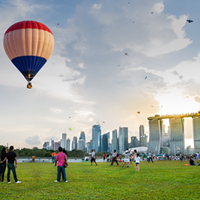Retire in Lima Guide
Summary: Retire in Lima with confidence, armed with the knowledge from our extensive guide. It covers critical considerations for retirees, from the cost of living and climate to housing, healthcare, and residency choices in Lima. We also delve into the social and cultural scene, volunteering options, public transportation facilities, and the city's walkability, helping you make an informed decision.
Retiring in Lima is an increasingly popular choice for international retirees. The city offers a unique blend of modern amenities, rich history, and a vibrant culture. The cost of living is relatively low, the climate is pleasant, and the healthcare system is robust. However, like any foreign country, there are challenges to consider, such as language barriers and cultural differences.
Cost of Living
The cost of living in Lima is one of its biggest draws for retirees. Housing, groceries, and healthcare are all significantly cheaper than in many Western countries. For example, a one-bedroom apartment in the city center can be rented for as little as $500 per month. Eating out is also affordable, with a meal at a mid-range restaurant costing around $10.
Climate
Lima's climate is mild and temperate, with temperatures rarely exceeding 30 degrees Celsius (86 degrees Fahrenheit) or dropping below 14 degrees Celsius (57 degrees Fahrenheit). The city experiences a dry season from May to November and a wet season from December to April. The coastal location also means that there is often a refreshing sea breeze.
Healthcare
Lima is home to some of the best hospitals in Peru, many of which offer services comparable to those in Western countries. The city's doctors are well-trained, and many speak English. Private healthcare is affordable, with consultations often costing less than $30.
Public Healthcare System
Peru's public healthcare system, known as SIS, is available to all residents, including international retirees. However, many retirees opt for private healthcare due to shorter waiting times and a wider range of services. It's also worth noting that some medications may not be available through the public system, so private health insurance is recommended.
Residency Options for Retirees
Peru offers a retiree visa, known as the Rentista Visa, which requires proof of a monthly income of at least $1,000. This visa allows retirees to live in Peru indefinitely and includes the right to work.
Parks and Recreational Activities
Lima offers a wealth of recreational activities for retirees. The city is home to numerous parks, including the Parque de la Reserva, which features the world's largest fountain complex. For those interested in history, the city's historic center, a UNESCO World Heritage Site, is a must-visit.
Restaurants
Lima is renowned for its culinary scene. Popular, affordable restaurants include La Lucha Sangucheria, known for its sandwiches, and Pescados Capitales, famous for its ceviche. For a more upscale dining experience, Central Restaurante is one of the top restaurants in Latin America.
Learning the Language
While many people in Lima speak English, learning Spanish can enhance your retirement experience. The El Sol Spanish Language School offers intensive courses for all levels.
Local Culture
Limans are known for their warmth and hospitality. The city has a relaxed pace of life, with a strong emphasis on family and socializing. However, it's important to be aware of local customs and etiquette to avoid misunderstandings.
Markets
Lima's markets are a feast for the senses. The Mercado de Surquillo is a popular choice for fresh produce, while the Mercado Indio is the place to go for handicrafts and souvenirs.
Meeting People and Volunteering
Meeting people in Lima is easy, with numerous social clubs and organizations catering to international retirees. Volunteering is also a great way to get involved in the community. Organizations such as TECHO and Manos Unidas offer opportunities to help those in need.
Housing
Most retirees in Lima live in apartments, which are plentiful and affordable. The districts of Miraflores and San Isidro are particularly popular due to their safety, amenities, and proximity to the coast.
Transportation
Lima's public transportation system is extensive and cheap, making it easy to get around without a car. The city is also highly walkable, particularly in the central districts.
About the Author
 Joshua Wood, LPC joined Expat Exchange in 2000 and serves as one of its Co-Presidents. He is also one of the Founders of Digital Nomad Exchange. Prior to Expat Exchange, Joshua worked for NBC Cable (MSNBC and CNBC
Primetime). Joshua has a BA from Syracuse and a Master's in Clinical and Counseling Psychology from Fairleigh Dickinson University. Mr. Wood is also a licensed counselor and psychotherapist.
Joshua Wood, LPC joined Expat Exchange in 2000 and serves as one of its Co-Presidents. He is also one of the Founders of Digital Nomad Exchange. Prior to Expat Exchange, Joshua worked for NBC Cable (MSNBC and CNBC
Primetime). Joshua has a BA from Syracuse and a Master's in Clinical and Counseling Psychology from Fairleigh Dickinson University. Mr. Wood is also a licensed counselor and psychotherapist.
Some of Joshua's articles include Pros and Cons of Living in Portugal, 10 Best Places to Live in Ireland and Pros and Cons of Living in Uruguay. Connect with Joshua on LinkedIn.



